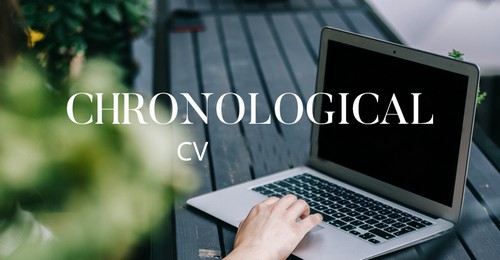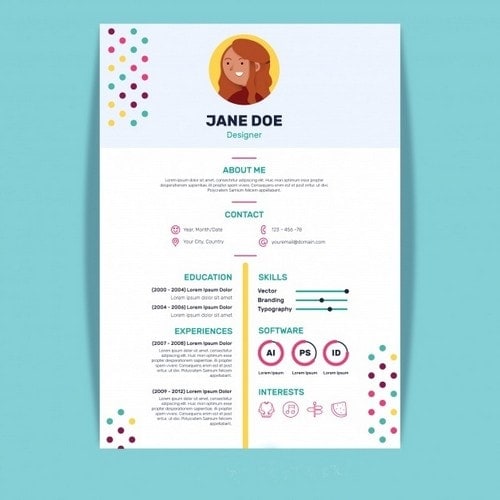A curriculum vitae or CV is a document that makes your first impression on the recruiter. It should be able to grab the attention of the recruiter but not for the wrong reasons. Curriculum vitae should be easy to read and should provide brief information about your education, skills and work experience.
It is used mainly for the job hunt. It tells employers what you can do and what you can’t do. In addition to this, your CV can help you to get selected for the job that you desire. A well-written CV can make a lot of difference and can make the job- hunt work easy.
A curriculum vitae should be accurate and it should clearly target to the job you are applying for. Make sure to include all the relevant information such as information related to your education, previous jobs etc. However, it should not be too long. The length of an ideal curriculum vitae should be kept 1-2 pages. It should give a clear expression of your image as an employee and don’t forget to enclose all the relevant facts in your CV.
Language and style of the CV should be clear and engaging. While making it engaging and interesting don’t forget to keep it professional. There are some things which are necessary to include such as your contact details. However, it would be a boon if you provide the link to your LinkedIn profile. Your education and qualification must include
- Various level of education and all vocational courses along with dates and grades.
- A brief summary of subjects or various modules that you have covered during your education.
- Also, mention your grades (percentage/ CGPA or any other).
- Your professional and transferrable skills.
- Job responsibilities from your previous job. Don’t forget to mention any additional work experience you have.
While above-mentioned points are important to mention in a CV, however, there are few commonly found information in most CVs such as age, nationality, health and marital status, full address of home or college or university should be avoided. Along with these, a candidate should also take care of the following points while making a curriculum vitae.
Table of Contents
Important Points to Consider while making a CV
A) Accurate and complete information
A candidate should gather all the information about educational qualification, work experience, skills before start writing a CV. The information such as Contact number and email address must be accurate and working. Otherwise, the whole effort of writing a CV is waste.
B) Format
It is very important to consider the correct format as per the job you are applying for. In this article, you will learn about the different formats of curriculum vitae and where to use them. A correct format can make a good first impression of the candidate on the employer.
C) Personal profile or career summary
This section is the most important segment of a curriculum vitae. In this section, a candidate can give an overview of his personality and can also highlight personal qualities related to the job profile. This section should not be too long. Writing 3-4 lines will be enough and write this paragraph as a third person rather than using statements like “I am…”.
D) Use of language
A curriculum vitae can make or ruin your first impression on the employer. It is very important to use the correct and error-free language. One must not make any spelling or grammatical errors while writing a CV. Use of jargons must be avoided unless required. A difficult to read and erroneous CV can ruin your chances to get a job.
E) Be concise
Use appropriate font size. The font size should not be either too large or too small. Fonts like Arial 11, Calibri (body) 11 or times new roman 12 look professional and are easy to read for the eye. Write your CV in a proper fashion starting with a personal profile, skills, educational qualification followed by work experience.
F) Tailor your content as per the requirement of each job profile
Don’t keep forwarding the same CV for different types of jobs. Before sending your CV, read the job description carefully and alter your CV as per the requirements mentioned in the job profile. These points will help you to write an appropriate CV for your next job.
There are different formats to make a CV to present your skills and educational qualifications in an attractive way. Following is a list of different types of CV tailored as per the needs of the role you are applying for. You might put the same information in the different types of CV, but their structuring and heading will vary to make the difference.
1) Functional or Skill-based CV :
A functional or skill-based CV is good for freshers. Because a functional CV stresses more on the skills and expertise a candidate has rather than work experience. Therefore, candidates who have little experience and trying to switch should use this format to prepare their CV. In functional CV a candidate can mention the achievements and expertise gained by him through work experience or education. Skills should be mentioned in the rank of their importance and skills irrelevant to the job applied should be avoided.
A functional or skill-based CV is ideal for people who are looking for a career change. With the help of this type of CV, they can convince the employer to hire them despite having different work experience. A functional CV is useful for people who have changed jobs frequently and have experience in various works. A mature person can also adopt a functional CV to take away the limelight from his/her age and focus more on his/her skills.
2) Chronological CV :
A chronological styled curriculum vitae (CV) is a traditional type of CV. This type of CV is most suitable for job hunter and also preferred by most employers. Chronological CV presents your educational and work history arranged by dates.
Make sure to write the recent information first and mention the rest information in reverse chronological format. Adopting this method makes easy for readers to read and know about what have you recently been doing. Some chronological CVs also contain personal statement briefing about the key skills, strength, and ambition of the candidate.
Interests of the candidates should also be made part of the CV so that employers can know more about the candidate. A chronological CV can be used if a candidate has worked in same industry and has a stable progression throughout his/her career life and applying for promotion in the same company or applying for a job within the same industry. This type of CV is also for those candidates who don’t have many achievements to show or have no gaps in work or educational history.
3) Combination CV (Functional and Chronological) :
A combination CV is an amalgam of both Functional CV and Chronological CV. This type of CV is preferred when the candidate wants to make a long CV. This CV will include skills, expertise, educational Qualification, and work experience. Combination CV is preferred by people who want to make career change. To make a combination CV, one should first mention skills and expertise followed by educational qualification and work experience. Writing a combination CV is a tricky job, it is important that your CV grab the attention of employer since the beginning.
This type of CV should be used when a candidate not only have relevant skills for the job applied but also have work experience. A candidate can focus on the skill that he hasn’t been using in the present job. Usually, a combination CV is a good choice for the managerial and executive posts, because you can showcase your plenty of experience along with required skills.
4) Creative CV :
A creative CV is popular choice of candidates who are looking jobs in creative fields such as graphic designing, media, marketing, and brand consulting. These types of jobs require highly skilled creative people. Therefore, a creative CV is right choice to showcase your skills and past work to grab the attention of the employer.
As the name suggests creative CV is quite different from the traditional chronological and functional CVs. A creative CV not only mentions a particular skill but also back it up with the example of the work done using that skill. In addition to that, a candidate can also include the links to the work done.
This type of CV is difficult and tricky to make. One should see some samples of creative CVs before making one for him/ herself. There are various types of creative CVs such as infographic, visual and Prezi CV that one can use. The tools like visualize.me, Zety, Ineedresu.me, and visual CV can be used to make a creative CV.
5) Academic CV :
This type of CV is suitable when applying for post-graduation, doctoral degree, research fellowship, Lectureship. This type of CV gives more emphasis on the subjects studied, papers published, details of research expertise projects undertaken. It should also include teaching experience, professional associations, awards, grants and fellowships and licenses relevant to the post you are applying for.
It can also include your interest in organization which you want to work for in future.
Liked this post? Check out the complete series on Careers





its a most important topic and the writing quality is very good
I wany you send me a sample cv